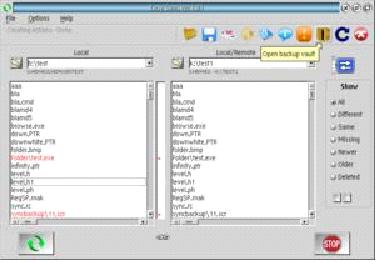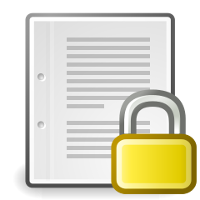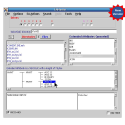Description
The easy way to synchronize and or back up directories. EasySync lets you see at a glance what files need to be updated between two directories whether they reside on the same machine or even on separate PCs on the network. This simple but powerful graphical interface allows you show files which should be updated, files that have been deleted, files that are missing, files that are newer and older, were deleted — plus the proposed transfer direction. Transfer can be set to bi-directional to fully synchronize two directories or uni-directional to limit which directory(ies) is/are updated as may often be the case when backing up files. A choice to display files/directories which have been selected to be ignored during the synchronization process is a standard option.
Features
- WarpIN Installation
- Multilingual: Danish, Dutch, English, French, German, Italian, Spanish, and Swedish
- Multi-core/processor support.
- Uni- and bi-directional synchronization
- Supports Netdrive
- High Level data encryption support
- Data compression (huffman encoding)
- Inclusion / exclusion rules
- Support for large files (> 2 GB)
- Number of files limited only by available memory (and disk space)
- Automation of repetitive tasks via scripts
Details
This powerful synchronization and backup program can synchronize a directory and all sub-directories and files therein with a directory of the same, or most likely on a separate machine/laptop. Depending on the synchronization mode selected you can either automatically synchronize or do a step for step synchronization in which you retain full control of which files are transferred. Once a particular action has been tried and tested, it can be stored as a script file for use at a later time. Various filters and options give you full control.
Failsafe:
Whenever a file is about to be overwritten or deleted it is first stored on disk for later retrieval should it be necessary. The location of these files is called the Vault.
The Vault contains any number of versions of the same file every time that file is deleted or overwritten. The number of versions stored is only limited by the available disk space or by a number that you as the user have specified.
All transactions are logged so that you can always verify what actions have taken place.
System Requirements
- OS/2 Warp 4, MCP, MCP2, eCS, ArcaOS
Notes
- If you already have a license for EasySync you can download the latest version version from Hobbes.
- When you have purchased EasySync, please read the following instructions on how to install your EasySync program.




